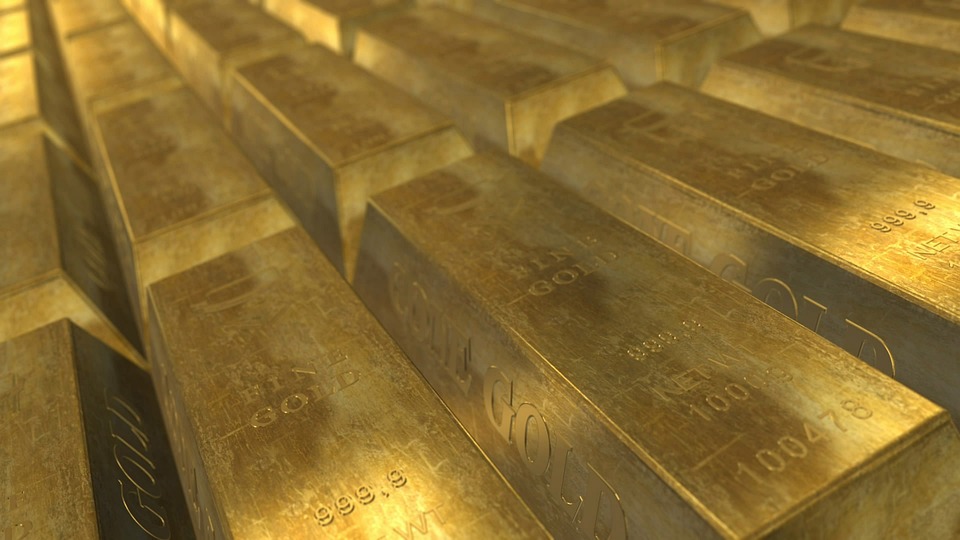Gold Surges As Investors Brace For Rate Cuts And Sticky Inflation

Image Source: Pixabay
Markets surged after Federal Reserve Chairman Jerome Powell suggested at Jackson Hole that the U.S. central bank may be ready to cut interest rates in September. Traders took it as a green light, while Goldman Sachs, J.P. Morgan, Barclays and others quickly pivoted their forecasts. The CME FedWatch tool now puts the odds of a September cut at nearly 90%.
I should point out, though, that the Fed isn’t preparing to cut because the economy is booming (which would be counterintuitive). It’s cutting because cracks are starting to appear in the foundation, particularly in the labor market. At the same time, President Donald Trump’s sweeping tariffs may be feeding inflation, making Powell’s job more political than ever.
This tug-of-war, between fiscal and monetary policy, gets to the heart of today’s investing landscape. And nowhere are the consequences clearer, perhaps, than in housing and gold.
The Decline of Affordability in the U.S. Housing Market
If you ask Americans what the American Dream means, 75% will tell you it includes owning a home. That’s according to a January survey by Realtor.com.
But the data shows the dream is fading.
In the second quarter of this year, the homeownership rate fell to 65%, the lowest since 2019 and well below the 2004 peak of 69%. Affordability is at a multidecade low. The culprit? A perfect storm of high mortgage rates and home prices that, while off their June highs, are still out of reach for many Americans.

According to the Harvard Joint Center for Housing Studies, the annual income needed to afford payments on a median-priced home was $79,000 in 2021. By 2024, it had jumped to $127,000, representing a 60% increase in just three years. Median household income, meanwhile, barely budged.

That gap may help explain why buyers are walking away. In July, nearly 60,000 home-purchase agreements were canceled — 15% of all pending sales, the highest rate on record for July, according to Redfin. In U.S. Global Investors’ hometown of San Antonio, one in five buyers is walking away after signing a contract.
Renting Has Become the Cheaper Option in Most U.S. Cities
The pain doesn’t stop at mortgages. The average American is now paying nearly $2,800 per year for home insurance, up sharply as inflation, supply chain disruptions and extreme weather take their toll. In Nebraska and Oklahoma, where hail and volatile weather are common, premiums are nearly triple the national average.
The result is that for the first time in decades, renting is far cheaper than owning. In 49 out of 50 major U.S. metros, it costs more to buy than to rent, according to Bloomberg.
This flips the script of generational wealth-building. For much of U.S. history, owning a home was the surest way to grow wealth. Today, that pathway is being priced out of reach for younger families.
Powell Faces Pressure Between Jobs Weakness and Inflation Risk
All of this leaves Chair Powell in a bind. On one hand, the job market is softening, and there’s political pressure from the president to slash rates aggressively to 1%.
On the other hand, tariffs could create sticky inflation. Cut too soon, and the Fed risks stoking even higher prices. Wait too long, and layoffs spread.
Wall Street is split. Some analysts expect cuts in both September and December, whereas others warn that cutting now could be a “policy error.”
What’s clear is that the Fed is increasingly politicized, with central bank independence at risk. Powell has been publicly attacked by Trump, who has gone so far as to demand his resignation.
Falling Rates Have Been Favorable for Gold Prices
That brings us to gold, the asset investors have reached for in uncertain times.
Unlike a house, gold doesn’t generate rental income or dividends. But it does something just as valuable: It protects purchasing power, which has plummeted dramatically over the decades.
When interest rates have fallen, gold has historically shone brighter. Yields on savings accounts and bonds decline, making non-yielding assets like gold more attractive.
At the same time, a weaker dollar raises the price of gold.

Gold is already up significantly this year, but the case for owning it hasn’t diminished. If anything, I believe it has strengthened.
Why Gold Remains a Core Asset in Uncertain Times
I’ll leave you with two insights.
Be cautious about assuming the Fed can “fix” the economy with rate cuts. Lower rates may offer some relief, but they can’t roll back tariffs or rebuild housing supply overnight.
And two, consider taking a serious look at gold and real assets as part of a diversified portfolio. I continue to recommend a 10% weighting in the yellow metal, with 5% in physical gold and the other 5% in high-quality gold mining stocks and ETFs. Rebalance on a regular basis.
I happen to believe that the American Dream is alive and well, but it’s being reshaped. For older generations, homeownership was the cornerstone of wealth. For younger Americans, that path appears to be narrowing. Meanwhile, the Fed is being pulled between inflation and politics, and the U.S. debt load is swelling.
As I often say, government policy is a precursor to change. Today’s policies — tariffs, deficits, politicized rate cuts — are pointing toward a future where gold is more than just a “barbarous relic.” It’s proven itself to be a core asset in uncertain times such as now.
More By This Author:
AI Data Centers Push Power Demand To The Fastest Growth In Decades
America’s Top 10 Busiest Airports
Royalty And Streaming Giants Report Blockbuster Results



